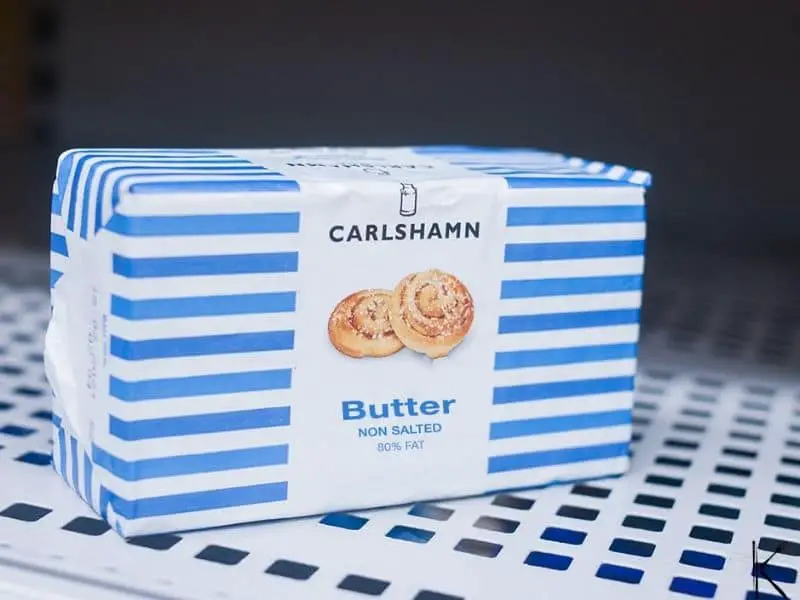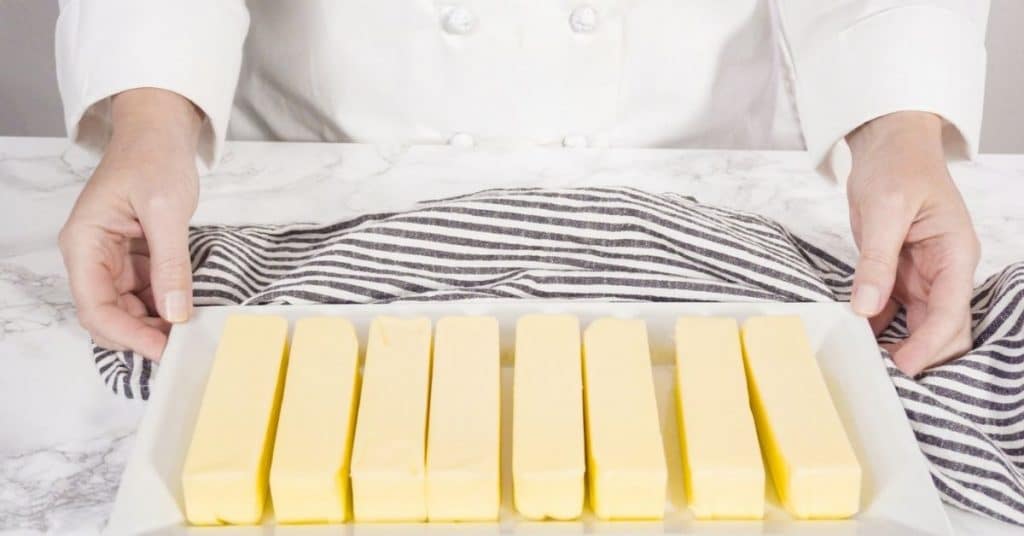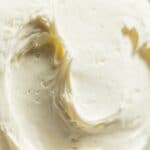In short, yes, you can freeze butter to prolong its shelf life, but make sure it’s fresh and stored in an airtight container to avoid absorbing odors. Once thawed, it can be used as usual.
Fresh, good quality butter can turn any average baked item into something extraordinary. It provides a luxurious flavor and texture that artificial substitutes just cannot compare to. Butter is, however, not a cheap grocery item.
When you find it at a discount, it is tempting to stock up and make good use of the saving. The only thing is, too much butter is not great for the waistline, nor your health. So, how can you keep the extra stock without having it go bad if you can’t use it all within a month?
The good news is that butter freezes well. Freezing butter is an excellent way to prolong its shelf life without having to worry about a change in flavor, quality, or texture. Here is what you need to know to successfully store butter in the freezer.
Can Butter Be Frozen?
Yes, you can freeze butter to prolong its shelf life. It is important to ensure the butter is still fresh before freezing and to keep it in an airtight container or freezer bag.
Exposure to air in the freezer can result in the absorption of surrounding odors which will negatively affect the flavor of the butter. Once thawed, butter can be used in the same way as before freezing.
How To Freeze Butter
Step 1: Quality Check
Ensure the butter is fresh and not near its expiry date. If the butter has expired, shows signs of mold, or has turned sour, it should not be frozen.
Step 2: Portion
You can freeze the entire stick or block of butter in its original packaging. However, you will have to use the entire block or frozen stick within a month of thawing. Alternatively, cut the butter into smaller blocks which will make it easier to remove only what is needed at a given time.
Step 3: Wrap
Wrap each portion of butter in aluminum foil or plastic wrap. Ensure that all the corners are well sealed with no open gaps or exposure to air. Place the wrapped block into a freezer safe bag, pressing out any excess air before sealing the bag.
When freezing butter in its origional packaging, make sure to cover it tightly in a double layer of plastic wrap or aluminum foil as well.
Step 4: Label and Freeze
Label the freezer safe bag with the date of freezing and place it in the freezer.
How To Thaw Frozen Butter
The method for thawing butter that you choose will depend on what you are using it for and how much time you have. If you are making puff pastry, you can remove the butter sticks and grate the frozen butter without thawing.
Method 1: Refrigerate
The best way to thaw butter is to place the freezer bags in the refrigerator overnight.
Method 2: Grate
To thaw frozen butter quickly, grate the amount needed onto waxed paper with a cheese grater or box grater. The grated pieces will defrost in a few minutes and be ready to use in no time.
Method 3: Stovetop
If you need melted butter, you can place the frozen butter straight into a saucepan or pot to melt as needed. This is generally not suitable for baking but is great for basting or sautéing.
Types of Butter

Butter is a solid, yet spreadable dairy product at room temperature. It consists of approximately 80% butterfat.
Although fresh butter is generally made from cow milk, it can also be manufactured from sheep, goat, and yak milk, of which all are available either salted or unsalted.
Butter is incredibly versatile for a wide range of tasty recipes. It adds a delicious richness to whatever you’re cooking up. Softened butter is often used in baking recipes whereas melted butter can be incorporated into sauces or used for light frying and basting. Cold butter is best for pie crust recipes whereas butter spreads are used on bread, bagels, toast, and crackers.
Clarified butter has an even higher fat content since making it involves the separation and removal of almost all the water and milk solids, leaving pure butterfat.
Clarified butter is, therefore, a richer and heavier butter product with a better ability to withstand high heat making it suitable for frying and deep sautés.
FAQs
Conclusion
Whether used for baking, cooking, making a sauce, or spreading, butter adds a delicious rich flavor to any meal. Good quality butter is not a cheap addition to the pantry, and therefore, being able to prolong its shelf life by freezing makes it possible to ensure nothing goes to waste.
Freezing butter is really simple to do. Most importantly, ensure that the product is well protected from contact with air. Be sure to keep the frozen butter separate from foods with strong odors such as fish or onions when storing.
Now that you have frozen butter, you can also make a delicious flaky pastry with the frozen product. Happy baking!
Up next:
*image by urban_light/depositphotos









